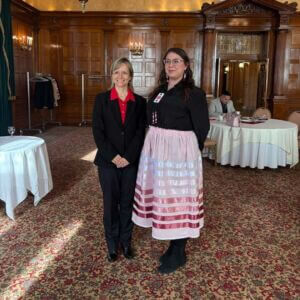by ICC Staff

For too long, Canada has relied on a punitive approach to address crime, particularly within Indigenous communities. This approach has failed to reduce crime or foster reconciliation. Instead, it has perpetuated cycles of incarceration, poverty, and marginalization.
The path forward lies not in punishment, but in building stronger, more resilient, communities. It must also be informed by the importance of cultural values, which promote healing, empowerment, and long-term safety.
The Failure of Punishment
Indigenous peoples in Canada are grossly overrepresented in the criminal justice system. While they make up about 5% of the national population, they account for over 32% of the federal prison population, according to the Office of the Correctional Investigator (2023).
For Indigenous women, the numbers are even more staggering: they represent 50% of the incarcerated female population. This is not because Indigenous communities are inherently more prone to crime, but because systemic and structural inequalities persist.
These include rampant poverty, intergenerational trauma, lack of access to services, and the historical maltreatment of Indigenous communities by the state –– all of which have gone unaddressed for generations.
Punitive measures such as mandatory minimum sentences, over-policing, and incarceration fail to tackle these root causes. They remove individuals from their communities, disrupt family structures, and often exacerbate trauma. Moreover, such an approach only sows deeper distrust of authority by marginalized communities –– a step backward.
Restorative Justice
Instead, restorative justice and community-based approaches have shown far greater promise. Programs like the Gladue courts and community sentencing circles aim to incorporate Indigenous traditions, values, and an understanding of the social context behind criminal behavior. These methods prioritize accountability and healing over retribution.
Moreover, investing in social infrastructure, such as education, housing, mental health services, and youth programming, which have all been neglected in Indigenous communities, can be a powerful crime prevention strategy.
A 2021 report by the Public Safety Canada Research Division found that community-based programs focused on risk-prevention strategies can reduce criminal involvement and recidivism rates by as much as 26%. By giving individuals access to opportunity and support, communities can address crime at its roots rather than reacting to its symptoms.
Some Indigenous-led initiatives are already paving the way. The Hollow Water First Nation in Manitoba has operated a restorative justice program for decades, where offenders are reintegrated into the community through healing circles and ongoing support. Evaluations have shown this approach to be far more effective and cost-efficient than incarceration, with much lower rates of reoffending.
From Punitive Reaction to Community Prevention
Ultimately, the goal should not be to punish, but to build communities where crime is less likely to occur in the first place. This requires a fundamental shift in how Canada approaches justice: one that prioritizes Indigenous voices, acknowledges historical harms, and invests in long-term solutions.
Importantly, such a shift toward a preventative approach rather than a punitive approach requires a holistic and collective approach. Promoting community-based solutions requires the involvement of businesses, non-profit organizations, governments, and active citizens.
To facilitate this, intelligent policy must be implemented to incentivize the right actors –– this process begins first by recognizing the need for community building, which is not only more humane and effective in the long run, but also necessary.
Join Our Newsletter
As Manitoba's voice for Indigenous business and your partner in economic reconciliation, we connect you to opportunities that drive change. Subscribe to receive updates on Indigenous business developments, partnership opportunities, and upcoming events delivered straight to your inbox.



